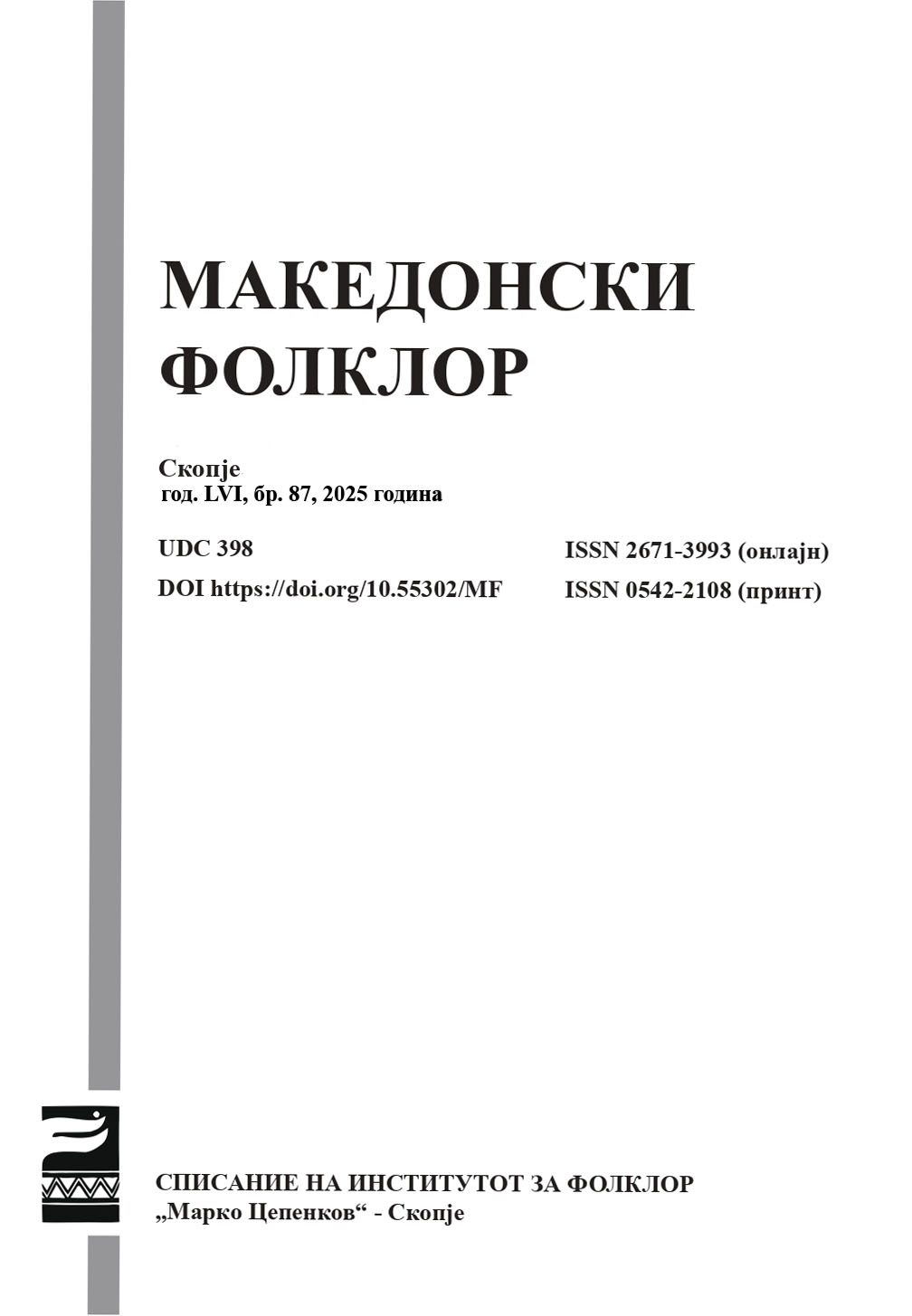Впишувањето на струшкиот црковно-народен обред „еортија“ („ордија“) на националната листа на нематеријалното културно наследство – од идеја до реализација
The registration of the “Eortia” (“Ordia”), a church-folk ritual in Struga, on the national list of intangible cultural heritage – from idea to realization
Author(s): Zorančo MalinovSubject(s): Anthropology, Social Sciences, Theology and Religion
Published by: Институт за фолклор "Марко Цепенков" - Скопје
Keywords: procession; church; St. George; Struga
Summary/Abstract: The “Eortia”9 rite is a church-folk procession (“litia”) that is organized in the city of Struga on the day after the holiday dedicated to St. George (“Ǵurǵovden“), i.e. on the 7th of May. According to some Struga natives, the “Eortia” (“Ordia”) is an old ritual that was practiced in the more distant past, that is, more than 200 years ago. Although this information cannot be supported by valid historical sources, the older Orthodox population of the city confirms that this ritual was also performed in the period between the two world wars. However, during the period of the establishment of the socialist government, this rite was performed with a much smaller number of believers in the courtyard of the church of “St. George”. Struga’s “Eortia” has been gaining popularity in recent years, especially after the territorial organization of 2004 and the local elections of 2005, when the Municipality of Struga had a mayor of Albanian nationality for the first time. The ritual is organized by a board composed of citizens and church authorities from Struga, and in addition to the mass presence of the Christian population of the city, the rite itself is also attended by church dignitaries headed by the bishop of the Debar-Kičevo diocese with headquarters in Ohrid, as well as members of the church brotherhood from the “Sv. Jovan Bigorski” monastery and the sisterhoods from the monasteries of “Sv. Ǵorǵi” in Rajčica near Debar and “Sv. Bogorodica Prečista” near Kičevo. In this paper, in addition to the description of the “Ordia” ritual, special attention is dedicated to the procedure for the registration of this Struga ritual on the national list of intangible cultural heritage, from the idea and initiative itself, to thus its registration in the Register of Intangible Cultural Heritage maintained by the Administration for the Protection of Cultural Heritage of the Republic of North Macedonia.
Journal: Македонски фолклор
- Issue Year: LVI/2025
- Issue No: 87
- Page Range: 23-34
- Page Count: 12
- Language: Macedonian

